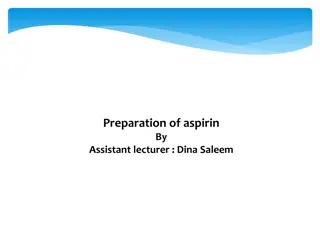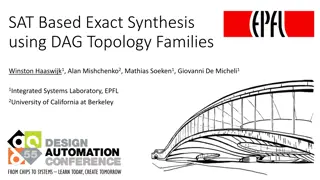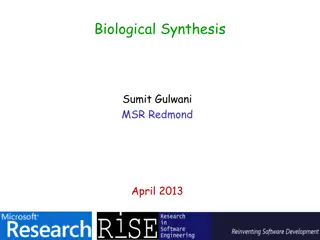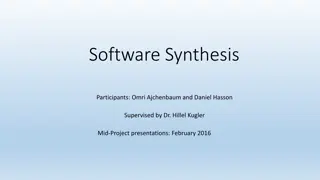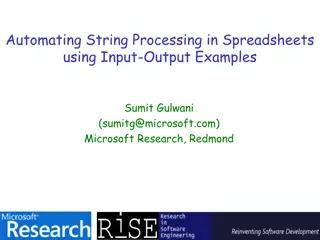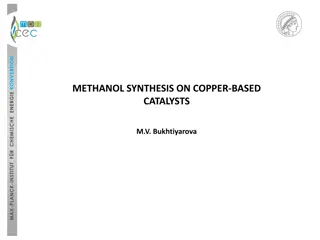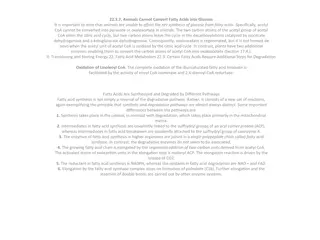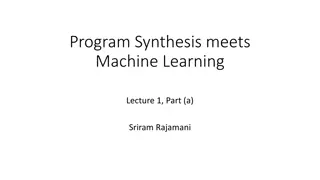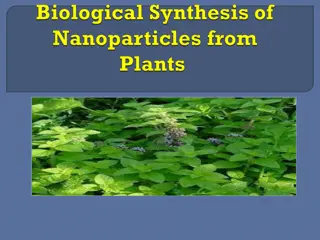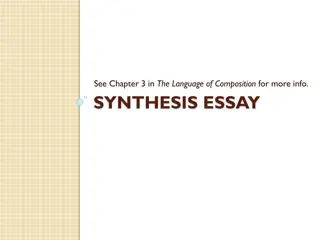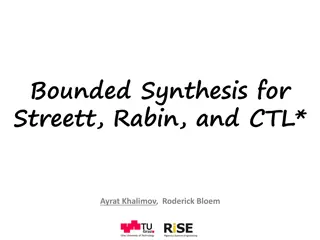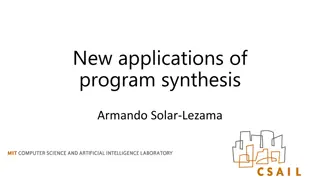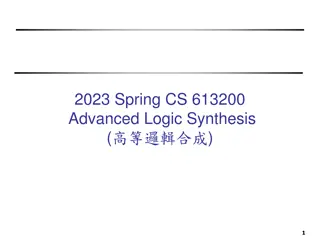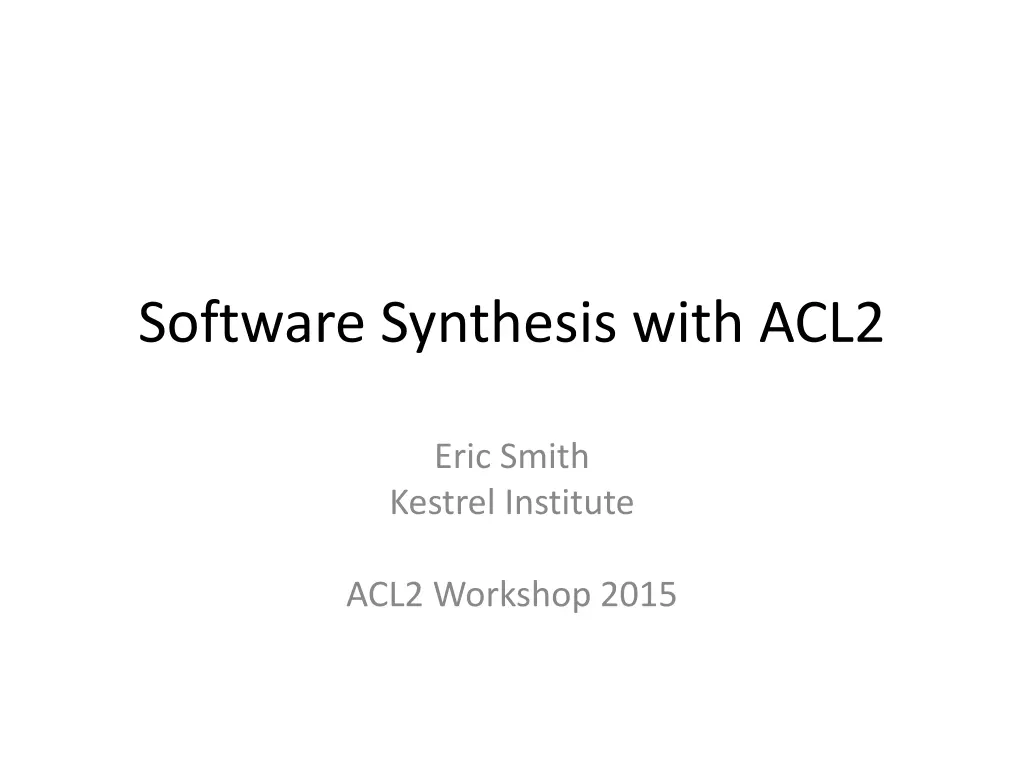
Refinement-Based Software Synthesis Techniques
Explore the innovative approach of refinement-based software synthesis using ACL2, focusing on proof-emitting transformations and the derivation of implementations from specifications through correct refinement steps. Discover techniques such as proof-producing transformations, make-tail-rec transformation, and finite-differencing transformation in this comprehensive workshop.
Download Presentation

Please find below an Image/Link to download the presentation.
The content on the website is provided AS IS for your information and personal use only. It may not be sold, licensed, or shared on other websites without obtaining consent from the author. If you encounter any issues during the download, it is possible that the publisher has removed the file from their server.
You are allowed to download the files provided on this website for personal or commercial use, subject to the condition that they are used lawfully. All files are the property of their respective owners.
The content on the website is provided AS IS for your information and personal use only. It may not be sold, licensed, or shared on other websites without obtaining consent from the author.
E N D
Presentation Transcript
Software Synthesis with ACL2 Eric Smith Kestrel Institute ACL2 Workshop 2015
Outline Overview of Refinement-Based Synthesis Proof-Emitting Transformations Specs and Morphisms Joint work with Alessandro Coglio and others.
Refinement-Based Synthesis Derive an implementation from a specification via a sequence of provably correct refinement steps. Each step represents a design decision Not a new idea, e.g., Z notation B method VDM (Vienna Development Method) Specware defspec / defrefine / New implementation in ACL2
Part 1: Proof-Producing Transformations make-tail-rec assoc monoid nats counting down bit vectors counting down finite-difference remove-cdring expand-lets letify simplify-body rewrite-body drop-function-from-nest drop-irrelevant-params flatten-params homogenize-tail-rec flip-if rename-params reorder-params restructure-elseif make-do-while lift-condition weaken strengthen wrap-output wrap-input undo-finite-difference undo-make-tail-rec define-op copy-spec spec substitution decrease-and-conquer divide-and-conquer
Make-tail-rec Transformation (defun sum-squares (n) (if (zp n) 0 (+ (* n n) (sum-squares (- n 1))))) (make-tail-rec-monoid sum-squares :domain natp) (DEFUN SUM-SQUARES$1 (N ACC) (IF (ZP N) ACC (SUM-SQUARES$1 (- N 1) (+ ACC (* N N))))) (DEFUN SUM-SQUARES$1-WRAPPER (N) (SUM-SQUARES$1 N 0)) (DEFTHM SUM-SQUARES-IS-SUM-SQUARES$1-WRAPPER (EQUAL (SUM-SQUARES N) (SUM-SQUARES$1-WRAPPER N)))
Finite-differencing Transformation (DEFUN SUM-SQUARES$1 (N ACC) (IF (ZP N) ACC (SUM-SQUARES$1 (- N 1) (+ ACC (* N N))))) (finite-difference sum-squares$1 (* n n) *math-rules*) (DEFUN SUM-SQUARES$2 (N ACC N*N) (IF (ZP N) ACC (SUM-SQUARES$2 (- N 1) (+ ACC N*N) (+ N*N (- N) (- N) 1)))) Maintain invariant for n*n: (* (- n 1) (- n 1) = (+ (* n n) (- n) (- n) (* -1 -1)) = (+ (* n n) (- n) (- n) 1) = (+ n*n (- n) (- n) 1) (DEFUN SUM-SQUARES$2-WRAPPER (N ACC) (SUM-SQUARES$2 N ACC (* N N))) (DEFTHM SUM-SQUARES$1-BECOMES-SUM-SQUARES$2 (EQUAL (SUM-SQUARES$1 N ACC) (SUM-SQUARES$2-WRAPPER N ACC))
Remove-cdring Transformation (DEFUN MEMBERP (A X) (IF (CONSP X) (IF (EQUAL A (CAR X)) T (MEMBERP A (CDR X))) NIL)) (remove-cdring memberp) (DEFUN MEMBERP$1 (A X N) (IF (NOT (NATP N)) ; should never happen T (IF (CONSP (NTHCDR N X)) (IF (EQUAL A (CAR (NTHCDR N X))) T (MEMBERP$1 A X (+ 1 N))) NIL))) (DEFUN MEMBERP$1-WRAPPER (A X) (MEMBERP$1 A X 0)) (DEFTHM MEMBERP-BECOMES-MEMBERP$1-WRAPPER (EQUAL (MEMBERP A X) (MEMBERP$1-WRAPPER A X)))
Implementation of Transformations Use macros / make-event Look up the target function in the logical world Generate new function(s) Generate correctness theorems Carefully control the proofs All transformations prove correctness of their output Verifying compiler approach
Part 2: Specs and Morphisms Specware-style refinement in ACL2
Specs Spec: a logical theory collection of ops (functions), constraints (axioms), theorems, and imports of other specs Example: (spec sorting (op my-sort (l)) (axiom my-sort-correct (implies (true-listp l) (sorted-permutationp (my-sort l) l))))
Morphisms Morphism: a theory interpretation i.e., a property-preserving mapping between specs. Maps names to names Proof obligation: Axioms in source spec must be theorems in target spec
Trivial Example (spec s1 (op foo (x)) (op bar (x)) (axiom foo-bar (<= (foo x) (bar x)))) (morphism m (s1 s2) ((foo foo2) (bar bar2))) Proof Obligation: (<= (foo2 x) (bar2 x)) (spec s2 (op foo2 (x)) (axiom natp-of-foo2 (natp (foo2 x))) (op bar2 (x) (* 2 (foo2 x))))
ACL2 Implementation Uses macros and make-event Track everything with tables Spec: basically an encapsulate Specs can import other specs (allows hierarchy) No witness needed for consistency (next slide ) But still get a conservative extension of the ACL2 world Morphism: basically the obligations for a functional instantiation
Avoiding Giving Witnesses Encapsulate requires witnesses for the constrained functions Ensures the constraints are satisfiable Amounts to writing and proving an implementation But this is what refinement will ultimately do! Specs don t require witnesses Every spec with axioms gets a 0-ary witness predicate Added as a constrained function in the encapsulate Locally defined to be false Added as an assumption for every axiom and theorem Morphism maps source witness predicate to target witness predicate A fully-defined spec (last refinement step) doesn t have a witness predicate The final morphism maps the witness predicate to true.
Spec Substitution Spec Substitution: Specialize/Concretize a spec by applying a morphism Related to a categorical push-out Implementation: Basically a functional instantiation
Divide and Conquer (spec divide-and-conquer-problem (op problemp (x)) (op solutionp (solution problem)) (op directly-solvablep (problem)) (op solve-directly (problem)) (op divide (problem) :output (mv * *)) (op combine (solution1 solution2)) ... (axiom solve-directly-correct (implies (and (problemp problem) (directly-solvablep problem)) (solutionp (solve-directly problem) problem))) (axiom combine-correct (implies (and (problemp problem) (not (directly-solvablep problem)) (solutionp solution0 (mv-nth '0 (divide problem))) (solutionp solution1 (mv-nth '1 (divide problem)))) (solutionp (combine solution0 solution1) problem))) ...)
Divide and Conquer (spec divide-and-conquer-problem (op problemp (x)) (op solutionp (solution problem)) (op directly-solvablep (problem)) (op solve-directly (problem)) (op divide (problem) :output (mv * *)) (op combine (solution1 solution2)) ... (axiom solve-directly-correct (implies (and (problemp problem) (directly-solvablep problem)) (solutionp (solve-directly problem) problem))) (solve-directly problem) (mv-let (first-subproblem second-subproblem) (divide problem) (combine (solve first-subproblem) (theorem solve-correct (implies (problemp problem) (solutionp (solve problem) problem)))) (spec divide-and-conquer-solution (import divide-and-conquer-problem) (op solve (problem) (if (not (problemp problem)) :default-value ;should never happen. (if (directly-solvablep problem) (axiom combine-correct (implies (and (problemp problem) (not (directly-solvablep problem)) (solutionp solution0 (mv-nth '0 (divide problem))) (solutionp solution1 (mv-nth '1 (divide problem)))) (solutionp (combine solution0 solution1) problem))) ...) (solve second-subproblem))))))
(spec merge-sort-problem Merge Sort ;;Returns (mv part1 part2) (op split-list (lst) (if (endp lst) (mv nil nil) (if (endp (rest lst)) (mv (list (first lst)) nil) (mv-let (part1 part2) (split-list (rest (rest lst))) (mv (cons (first lst) part1) (cons (second lst) part2)))))) ;; Merge the sorted lists LST1 and LST2 into a sorted list. (op merge-lists (lst1 lst2) (declare (xargs :measure (+ (len lst1) (len lst2)))) (if (endp lst1) lst2 (if (endp lst2) lst1 (if (< (first lst1) (first lst2)) (cons (first lst1) (merge-lists (rest lst1) lst2)) (cons (first lst2) (merge-lists lst1 (rest lst2))))))) ;;Recognizes directly solvable instances: (op short-listp (lst) (< (len lst) 2)) ;; A list of length 0 or 1 is already sorted: (op do-nothing (lst) lst) ...)
Applying Divide and Conquer Step 1 (prove the morphism) (spec divide-and-conquer-problem (op divide ) (op combine ) (axiom ) ) (spec merge-sort-problem (op split-list ) (op merge-lists ) ) (morphism ((problemp true-listp) (solutionp sorted-permutationp) (directly-solvablep short-listp) (solve-directly do-nothing) (divide split-list) (combine merge-lists) ) Proof Obligations: (theorem merge-sort-solve-directly-correct (implies (and (true-listp lst) (short-listp lst)) (sorted-permutationp (do-nothing lst) lst))) (theorem merge-lists-correct (implies (and (true-listp problem) (not (short-listp problem)) (sorted-permutationp solution0 (mv-nth 0 (split-list problem))) (sorted-permutationp solution1 (mv-nth 1 (split-list problem)))) (sorted-permutationp (merge-lists solution0 solution1) problem))) ...
Applying Divide and Conquer Step 1 (apply Spec Substitution) (spec divide-and-conquer-problem (op divide ) (op combine ) (axiom ) ) (spec merge-sort-problem (op split-list ) (op merge-lists ) ) morphism import import (spec divide-and-conquer-solution (op solve ) (theorem solve-correct )) (spec merge-sort-solution (op merge-sort ) (theorem merge-sort-correct )) Generated by spec substitution Proof is done by functional instantiation. Normally, a derivation would have more than one step.
Conclusion Software Synthesis in ACL2 Stepwise Refinement Transformations Specs and Morphisms Correct-by-construction Code Variations: Generate diverse versions Verify existing code


